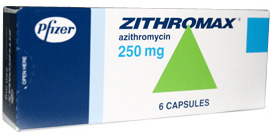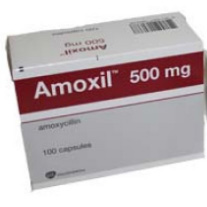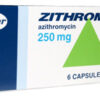Composition and Formulation Details
Zithromax contains the active ingredient azithromycin, a macrolide antibiotic, as its primary component. It is available in various formulations including tablets, oral suspension, and injectable forms. Common excipients in tablets may include lactose monohydrate, pregelatinized starch, and magnesium stearate. The oral suspension often contains sucrose and artificial flavors. Distinctively, the injectable formulation includes azithromycin dihydrate with sodium hydroxide as a pH adjuster.
Mechanism of Action
Zithromax exerts its antibacterial effects by binding to the 50S ribosomal subunit of susceptible microorganisms, thereby inhibiting RNA-dependent protein synthesis. This action effectively halts the growth of bacteria, as protein synthesis is vital for their replication. Azithromycin demonstrates bacteriostatic activity and has enhanced activity against atypical bacteria such as Mycoplasma pneumoniae.
Indications for Use
Zithromax is indicated for the treatment of various bacterial infections. These include respiratory tract infections such as bronchitis and pneumonia, skin infections, and sexually transmitted diseases like chlamydia. It is also employed in targeting other conditions including otitis media and pharyngitis. It is crucial in treating infections caused by susceptible strains of bacteria as determined by specific culture and susceptibility studies.
Pharmacokinetics and Metabolism
After oral administration, azithromycin is rapidly absorbed and widely distributed throughout body tissues. It achieves peak plasma concentrations within 2-3 hours. Azithromycin exhibits a long terminal half-life, facilitating once-daily dosing. Metabolism occurs in the liver, primarily via N-demethylation. Azithromycin is excreted mostly unchanged in bile, with minimal renal excretion.
Dosage and Administration
The typical dosage regimen of Zithromax varies depending on the indication and patient age. For most infections, adults receive an initial dose of 500 mg, followed by 250 mg once daily for four days. Pediatric dosing is calculated based on body weight. Zithromax should be taken with food to enhance absorption, especially when using the oral suspension. The injectable form is administered intravenously, generally over a 60-minute period.
Contraindications and Precautions
Zithromax contraindications include hypersensitivity to azithromycin or any macrolide antibiotics. Caution is advised in patients with hepatic impairment due to metabolism occurring in the liver. Special consideration should be given when prescribing for patients with arrhythmias, prolonged QT interval, or electrolyte imbalances. Zithromax may interact with drugs metabolized by CYP3A4, such as statins, necessitating careful co-administration.
Potential Drug Interactions
Concomitant use with antacids containing aluminum or magnesium can impair azithromycin absorption, thus affecting its efficacy. Co-administration with warfarin may potentiate anticoagulant effects and necessitate monitoring of prothrombin times. Combining with other macrolides or drugs prolonging the QT interval, such as certain antiarrhythmics, increases the risk of cardiotoxicity.
Adverse Reactions and Side Effects
Common side effects of Zithromax include gastrointestinal disturbances such as nausea, vomiting, and diarrhea. Some patients may experience abdominal pain and dyspepsia. Dermatological reactions like rash and pruritus have been noted. Uncommonly, serious adverse effects such as hepatotoxicity and anaphylaxis have been reported. Monitoring for any adverse reactions is essential, particularly in long-term therapy.
Specific Storage Conditions
Zithromax should be stored at room temperature, away from moisture and heat to maintain stability. Tablets and capsules must remain in their original packaging until use. Reconstituted oral suspension should be refrigerated and discarded after 10 days. Injectable solutions require specific handling; they should be kept in controlled light conditions until administration.
Use in Special Populations
In pregnant patients, Zithromax should only be used if the potential benefit justifies the potential risk to the fetus. Limited data are available regarding azithromycin’s presence in human milk, thus careful consideration is warranted for breastfeeding mothers. Dosage adjustments may be necessary in elderly patients due to potential age-related renal function decline.
Monitoring and Patient Counseling
Patients should be informed about the importance of completing the entire prescribed course to prevent resistance development. Those with a history of liver disease should monitor symptoms for potential hepatic effects. Regular evaluation of kidney and liver function tests is prudent in prolonged treatment instances. Patients must be advised to report any signs of an allergic reaction immediately.








Reviews
There are no reviews yet.